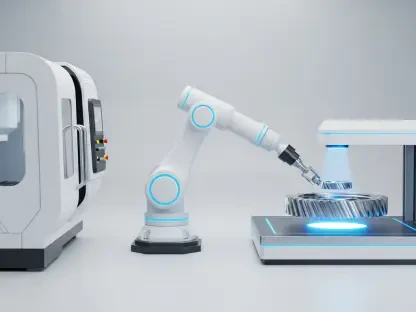The automotive industry is at the threshold of a new era dominated by incredible advancements in technology that aim to make vehicles not only smarter but also a lot safer. The road to 2032 will witness significant transformations as electric vehicles (EVs), connected technologies, and autonomous vehicles coalesce to redefine our driving experiences. At the core of this evolution lies the Automotive Semiconductor Market, a field that’s expected to burgeon as it grapples with the emerging demands of the automotive revolution.
The Electrification and Connectivity of Vehicles
Electric vehicles (EVs) have sparked a revolution in automotive design and production. As more automakers prioritize electrification, the demand for semiconductors with higher power and better energy efficiency is skyrocketing. Early adopters are now mainstream users, and this transition has created a surge in requirements for high-performance semiconductor components, which are essential for managing power, control systems, battery management, and a host of other functions integral to EVs.
Growth Drivers in the EV Segment
Electric vehicles stand poised to redefine the very essence of personal transport. Accelerated by the pursuit of a cleaner environment, governments across the globe are enforcing stricter emission standards and providing incentives for the adoption of EVs. As a result, the need for automotive semiconductors has increased substantially, with manufacturers striving to produce more efficient power conversion devices, battery management systems, and advanced chipsets that not only help in reducing emissions but also enhance vehicle performance.
Connectivity Fueling Semiconductor Expansion
Semiconductors are the bedrock upon which modern connected cars are built. They enable intricate vehicle systems to work seamlessly together and communicate with external infrastructure. Everything from navigation to vehicle-to-vehicle (V2V) communications relies on robust semiconductor components. As the connectivity of vehicles continues to deepen, the Automotive Semiconductor Market will continue to expand in proportion to the growing sophistication expected of these systems.
The Emergence of Autonomous Driving
Autonomous driving is not a futuristic vision anymore; it’s a technological enterprise that’s constructing its foundation today. As vehicle autonomy advances, semiconductor usage burgeons, becoming intricately woven into the fabric of vehicular intelligence. Autonomous vehicles crave a wealth of data processing, which depends entirely on reliable and high-performance semiconductor chips.
Role of Semiconductors in ADAS
Advanced Driver-Assistance Systems (ADAS) are integral to the enhanced safety and functionality of modern vehicles. Semiconductors sit at the heart of these systems, providing the computational heft necessary to process data from sensors that monitor vehicle surroundings. It’s this process that enables functions such as autonomous braking, lane-keeping assist, and adaptive cruise control, making ADAS one of the strongest growing segments within the automotive semiconductor sector.
The AI and Machine Learning Revolution
AI and machine learning are not just changing the game; they’re redesigning the rules of the game in the Automotive Semiconductor Market. Their incorporation into vehicle systems is paving the way for autonomously adaptive driving experiences and enhanced predictive maintenance. These revolutionizing technologies are set to play pivotal roles in shaping the future of automotive semiconductors by driving innovations that will define a new benchmark for vehicle intelligence.
Innovations in Semiconductor Technology
The technological arms race in the automotive sector is fueling relentless progress in semiconductor development. Innovation is not just a buzzword in this context but a tangible, progressive march towards creating smarter and exceptionally capable semiconductor components.
Smarter Chips for Safer Cars
Safety is paramount in the automotive world, and semiconductor technologies are stepping up to meet this challenge. The increasing quest for vehicle safety is directly influencing the innovation in semiconductor designs. The latest advancements aim at developing smarter chips with high-performance capabilities that can effortlessly meet the automotive industry’s stringent safety standards.
Energy Efficiency and Power Management
The noble pursuit of sustainability has steered the focus toward energy-efficient semiconductors. These not only cut down on the carbon footprint but also ensure that the overall performance and mileage of electric vehicles are not compromised. Power management ICs are essential in juggling the various energy-consuming components within EVs, thereby affirming their indispensable status in the Automotive Semiconductor Market.
The Competitive Landscape of Market Players
The fierce competition among the key players in the automotive semiconductor field is not only about staying ahead in technology but also about securing strategic partnerships and setting industry standards.
Leaders in the Semiconductor Arena
Prominent corporations like Infineon Technologies AG and NXP Semiconductors are leading this dynamic market, crafting an ecosystem where product performance and reliability underpin all other market differentiators. Their contributions to the development of next-generation semiconductor solutions have significant implications for the overall growth and trajectory of the industry.
Strategic Partnerships and Industry Standards
Joint ventures between semiconductor manufacturers and automotive giants, coupled with strict adherence to industry safety and quality norms, foster a collaborative environment that’s conducive to innovation and market expansion. These strategic partnerships are critical as they accelerate the pace at which new and reliable technologies are brought to market.
Challenges and Reliability in Semiconductor Manufacturing
The lightning-fast evolution of the automotive semiconductor market, while exhilarating, comes with its own unique set of challenges that span the complexities of manufacturing to ensuring that the highest standards of reliability are achieved.
Ensuring High Reliability and Meeting Standards
In the realm of automotive semiconductors, there’s no room for error. A fundamental challenge lies in maintaining unwavering reliability, which demands adherence to automotive-grade quality standards. The rigorous testing protocols and quality assurance measures bear testimony to the non-negotiable nature of reliability in this industry.
Navigating Complexity and Risks in Electronics
The auto industry is on the cusp of a dramatic transformation as it embraces cutting-edge technology, setting the stage for an era where vehicles are not just smarter but substantially safer as well. By 2032, we’ll see the convergence of electric vehicles (EVs), connected tech, and self-driving cars, revolutionizing the way we think about transportation.This shift is not just about the cars themselves but also about the underlying technology that powers them. Central to this shift is the Automotive Semiconductor Market, poised for significant growth to meet the increasing tech demands. Semiconductors are the backbone of modern vehicles, powering everything from infotainment systems to advanced driver-assistance systems (ADAS).As EVs gain traction, the demand for high-efficiency, high-performance semiconductors will skyrocket. These components are key to handling the data processing required for autonomous driving features and ensuring vehicles can communicate with each other and infrastructure. Additionally, as vehicles become more connected, cybersecurity will become increasingly important, and here too semiconductors play a crucial role.The road ahead for the automotive industry is electrified, interconnected, and automated, with semiconductors driving the journey. This market is not just responding to changes; it’s fueling them, laying the groundwork for a new era of mobility. The year 2032 marks not just a threshold but a gateway into an unprecedented automotive landscape, where safety and technology move forward hand in hand.









